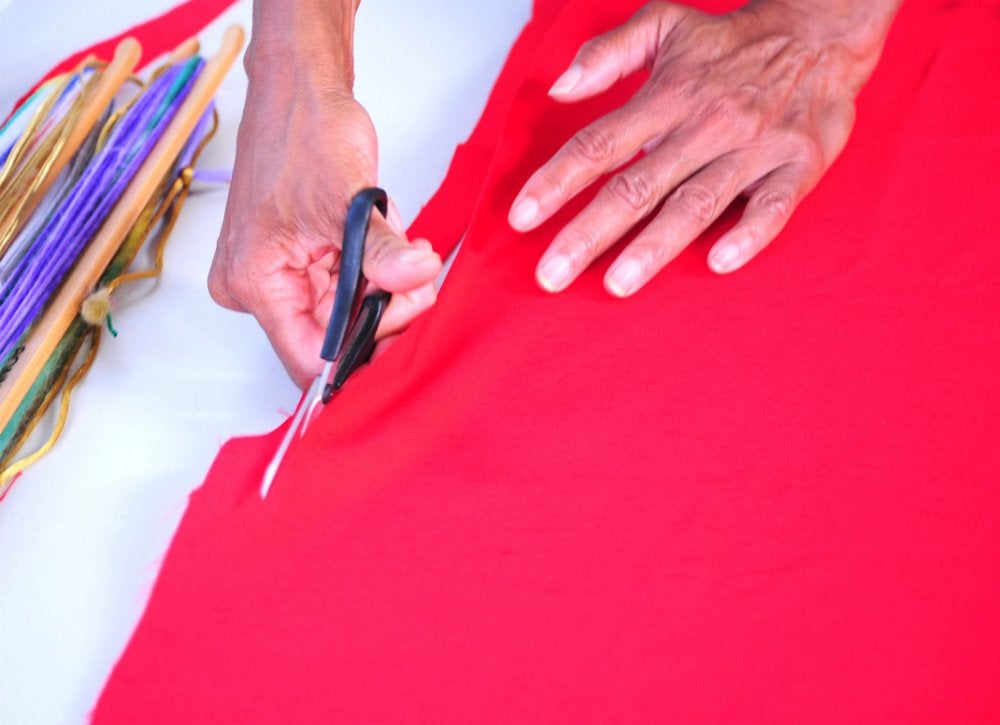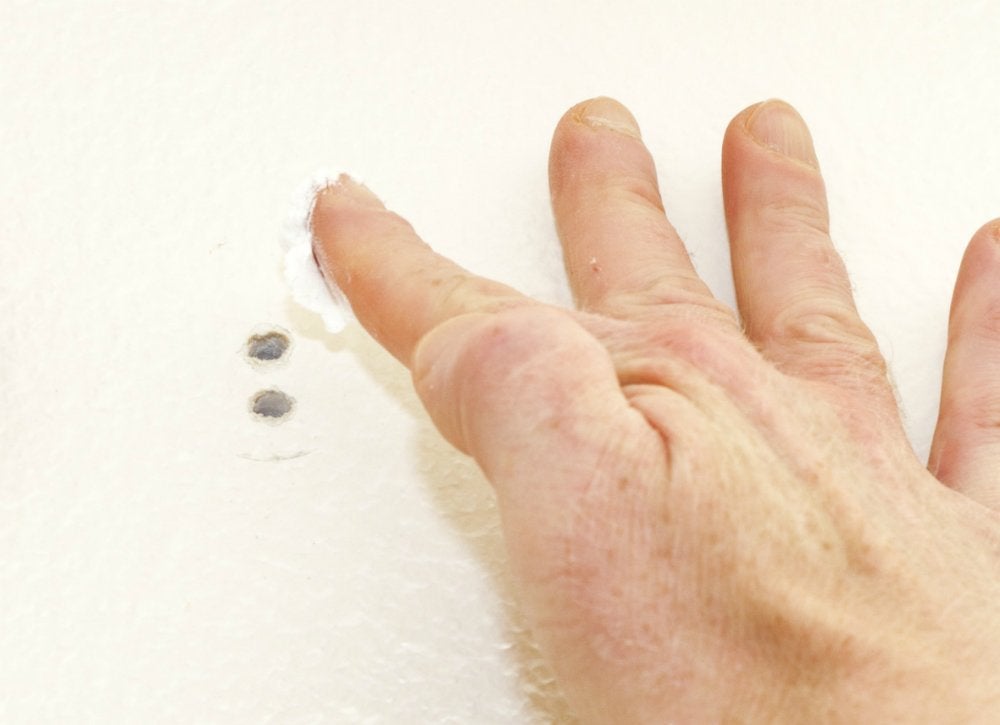We may earn revenue from the products available on this page and participate in affiliate programs. Learn More ›
Key to an Antique Finish

Transform a piece of furniture, picture frame, or even a tissue box cover into a vintage-look work of art by using Elmer’s glue to create a crackled or antiqued finish. First, paint the piece with a coat of acrylic craft paint and let dry. Cover the paint with a coat of Elmer’s glue, and while the glue is still wet, paint on another coat of acrylic paint, this time in a contrasting color. The painted surface will crackle as it dries, exposing the base color and creating a classic distressed finish. Let the piece dry thoroughly, and cover with another coat of glue to act as a sealer.
Related: Believe It or Not: 9 Incredible Faux Finishes You Can Do Yourself
Fast Filler

If you have a loose screw but don’t want to (or can’t) make a new hole in the wall, you can use glue and a cotton ball to tighten up the hole. Saturate the wad of cotton with glue, then stuff it into the hole. Let dry for 24 hours, and then drill the screw into the hole. The hardened cotton ball should anchor the screw in place.
Related: 15 Surprisingly Simple Woodworking Projects for Beginners
Splinter Remover

Remember the weird sensation of spreading Elmer’s glue on your fingers and then peeling it off after it dried? Put that childhood fascination to work removing nasty splinters from your skin. Apply a thin layer of glue about the size of a nickel over the skin, centering it on the splinter. Wait for the glue to dry, then peel it off—the splinter should come right out.
Sitting Pretty

Wood furniture can get a bit shaky over the years. Steady it up by using white glue to do a rapid repair on a wobbly chair or table leg. Carefully turn the piece on its side, and gently pull on the leg to expose any small gaps. Squeeze a liberal amount of glue all around the leg, filling in the spaces completely. Press the leg firmly back into place and set upright.
DIY Decoupage Medium

Make an easy and inexpensive decoupage medium by mixing three parts Elmer’s glue with one part water in a paper cup and stirring well. Use a sponge brush to spread the mixture over your chosen surface, smoothing out any air bubbles. Brush on additional layers as necessary before sealing your project with a final coat.
Furniture Fix

Particleboard furniture is popular and inexpensive, but it’s also prone to chipping and flaking. You can seal small chips or cuts by applying a layer of Elmer’s glue to the area, and then smoothing it out with a piece of plastic wrap, making sure to wipe off any excess. If desired, once the glue has dried you can use a permanent marker to make the repair the same color as the surrounding area. You also can use a half-and-half mixture of glue and water as a sealer for raw particleboard or chipboard before cutting.
Give Form to Fabric

If you need to stiffen fabric for a household project—crafting a window cornice or a new lampshade, perhaps—try using white glue and water to create an easy and inexpensive fabric stiffener. Mix equal amounts of white glue and water together in a bowl until the solution has the appearance and consistency of milk. Dip the fabric into the bowl, or paint the liquid onto the fabric. Use a form to shape the fabric as desired (or create your own form using chicken wire or heavy-duty aluminum foil). The glue will dry clear and stiff; you can apply more than one coat if the fabric needs additional stiffening.
Get Growing

Pruning is beneficial and necessary to ensure the long-term health and vitality of your roses. Pruning also, unfortunately, leaves plants vulnerable to insect damage and moisture loss. The solution? Dab a little bit of Elmer’s glue on the cut ends of pruned stems and branches. Cover the cut thoroughly with glue and allow to dry—it’s like a Band-Aid for your flowers!
Patch Job

So, you’re hanging a picture and you put the hole in the wrong place—maybe more than once. Let Elmer’s glue come to the rescue! You can fix small holes or dimples in a wall by filling the hole with a drop of glue and smoothing it flush with a piece of plastic wrap. Once the glue dries, dab a bit of paint on the repair to hide the glue.
Free of Frays

Keep shoelaces, ropes, and cords from fraying by sealing the ends with glue. Simply place a bit of glue in a small bowl, and dip the ends of the laces or cords into the glue, rolling to coat thoroughly.
Slime Time

Spend a fun afternoon with the kids mixing up this homemade “slime” with some Elmer’s glue, water, borax, and food coloring. Slime will keep for weeks in a tightly closed plastic bag. Note: Adult supervision is required; children should not eat or drink any of the material. Find two variations on this recipe at Our Best Bites.

Everything You Need for a Lush and Healthy Lawn
Keeping your grass green and your plants thriving doesn’t just take a green thumb—it starts with the right tools and supplies.

